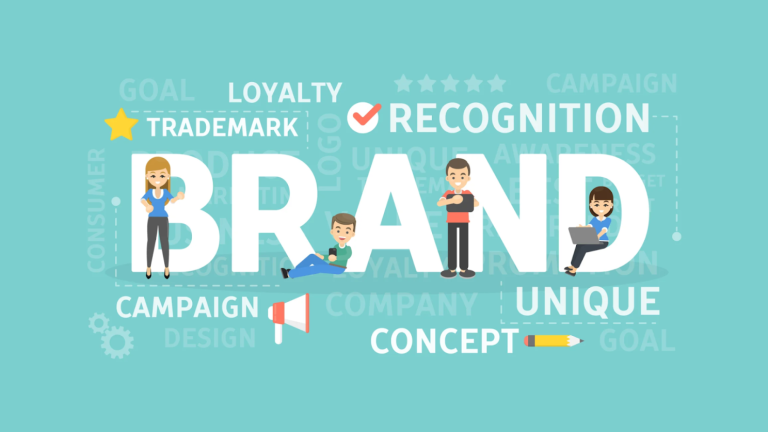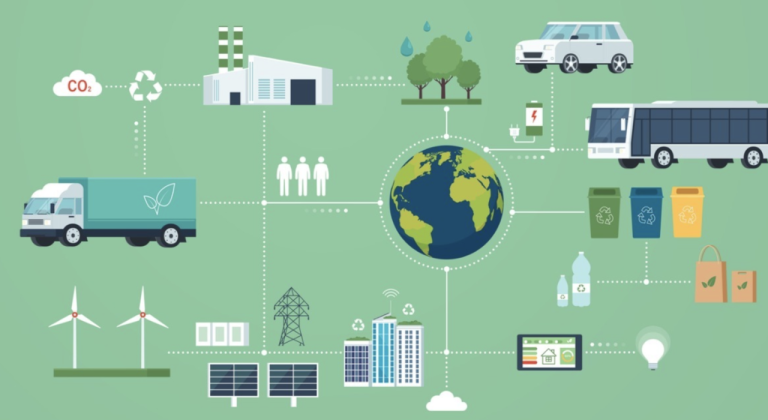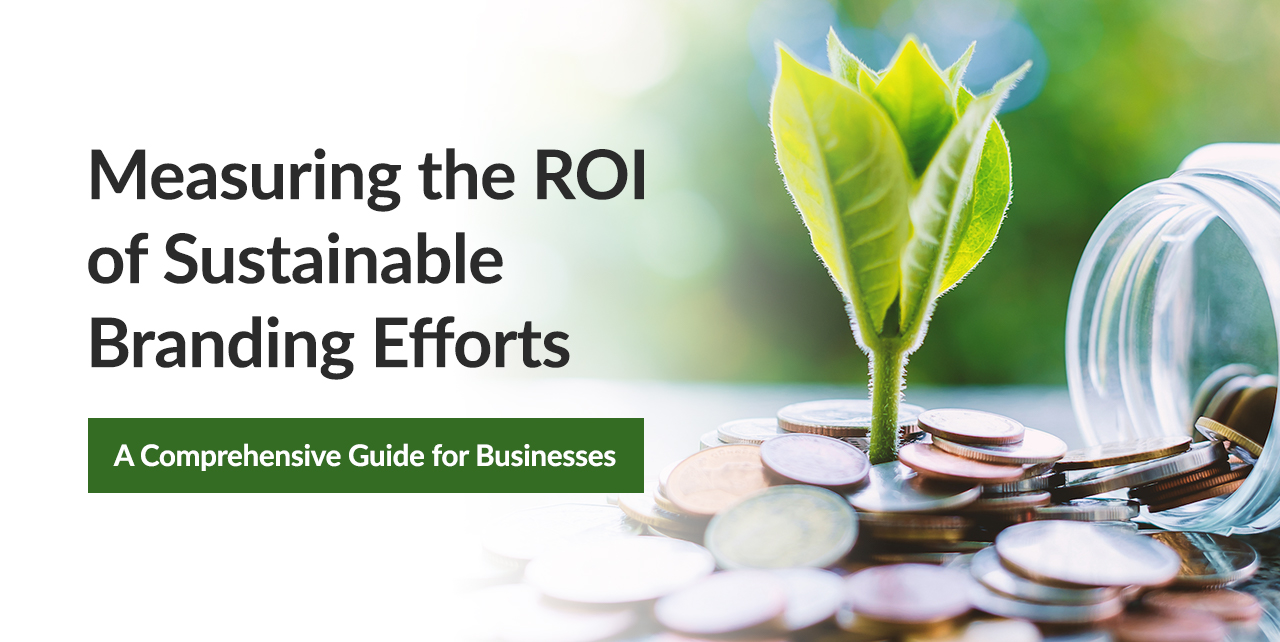In today’s business landscape, sustainable branding transcends trendy marketing. As companies channel resources into eco-friendly practices to meet consumer demands, comply with regulations, and bolster profitability, a crucial question emerges: How do we measure the return on these green investments? This guide delves into innovative methods for assessing the value of sustainable branding, offering a roadmap for aligning environmental initiatives with business goals to benefit both the planet and the bottom line.

Understanding Sustainable Branding ROI
Traditional ROI calculations fall short when evaluating sustainable branding efforts. While financial metrics remain crucial, a comprehensive assessment must encompass a broader spectrum of value creation. This includes tangible outcomes like increased market share and cost savings, as well as intangible benefits such as enhanced reputation, customer loyalty, and regulatory preparedness.
Key Considerations for Sustainable Branding Investments
When investing in sustainable branding, consider the following:
- Authenticity: Align sustainability efforts with your company’s core values to foster genuine engagement and mitigate skepticism.
- Patience: Recognize that the full benefits of sustainable branding often materialize over time. Adopt a long-term perspective in your strategy and evaluation.
- Integration: Weave sustainability into every facet of your business, from product development to customer interactions, to create a cohesive and impactful brand narrative.
Ways to Measure Sustainability ROI
Financial Metrics: Direct Impact on Sales and Revenue
One of the most straightforward ways to measure the ROI of sustainable branding is by looking at the direct financial impact on sales and revenue. Companies can track the performance of sustainably branded products compared to non-sustainable counterparts. Metrics to consider include:
- Sales Trajectory: Compare the growth rates of eco-friendly product lines against conventional offerings. For instance, IKEA reported a 30% surge in sustainable product sales over five years, underscoring the financial viability of green initiatives.
- Price Elasticity: Analyze consumers’ willingness to pay premium prices for sustainably branded items, potentially boosting profit margins.
- Market Penetration: Evaluate shifts in market share, particularly in segments prioritizing environmental responsibility. Companies like Patagonia and Tesla have leveraged sustainability to capture significant market share in their respective industries.
Green Branded Product:
Brand: Patagonia
Product: Patagonia Better Sweater® Fleece Jacket
Non-Branded Green Product:
Product: Reusable Stainless Steel Water Bottle
Brand Equity: Measuring Perception and Loyalty
Brand equity refers to the value a brand adds to a product or service, and it’s heavily influenced by consumer perception. Sustainable branding can enhance brand equity, leading to increased customer loyalty and long-term profitability. To measure this:
- Customer Surveys: Conduct surveys to measure consumer sentiment towards your sustainability efforts, correlating positive perceptions with brand loyalty and repeat purchases.
- Net Promoter Score (NPS): Use NPS to measure customer satisfaction and likelihood to recommend the brand based on its sustainability initiatives.
- Brand Recognition: Monitor changes in brand awareness, especially in markets where sustainability drives purchasing decisions.
- Customer Lifetime Value (CLV): Calculate the increase in CLV due to enhanced customer loyalty driven by sustainable practices. Brands that integrate sustainability deeply into their ethos often see a 20-40% increase in CLV compared to non-sustainable brands.
Cost Savings: Operational Efficiency and Risk Mitigation
Sustainable practices often lead to operational efficiencies and cost savings, which contribute directly to ROI and risk reduction. For example:
- Resource Optimization: Quantify reductions in energy consumption, water usage, and waste production, translating these efficiencies into cost savings.
- Customer Acquisition Cost (CAC): Monitor decreases in CAC resulting from improved brand loyalty and word-of-mouth marketing. Deloitte reports that companies effectively leveraging sustainability in their branding often see a 5-10% reduction in CAC.
- Regulatory Compliance: Staying ahead of regulatory requirements related to sustainability can prevent costly fines and penalties, contributing to long-term savings.
- Supply Chain Resilience: Sustainable sourcing practices can create more resilient supply chains, reducing the risk of disruptions and associated costs.
Social and Environmental Impact: Beyond the Bottom Line
While financial returns are critical, the true value of sustainable branding often lies in its social and environmental impact. Companies should consider:
- Social Impact Metrics: Measure the impact of sustainability programs on local communities, such as job creation, health improvements, or educational opportunities.
- Environmental Footprint: Track reductions in carbon emissions, water consumption, and waste generation, correlating these improvements with brand perception and customer loyalty.
- Third-Party Certifications: Achieving certifications like B Corp, Fair Trade, or LEED can provide tangible evidence of a brand’s commitment to sustainability, boosting its credibility and value in the marketplace.
Long-Term Value Creation: Building a Sustainable Future
Sustainable branding is an investment in the future. It helps companies build long-term value by fostering customer loyalty, attracting top talent, and positioning the brand as a leader in sustainability. To capture this long-term ROI:
- Talent Attraction and Retention: Companies with strong sustainability credentials often attract employees who are passionate about making a difference. Measure employee engagement and retention rates as indicators of the brand’s value.
- Investor Relations: Sustainable branding can appeal to socially responsible investors. Track changes in investor interest, funding opportunities, and share price performance in relation to sustainability efforts.
- Innovation: Sustainability can drive innovation, leading to new products, services, and business models that open up new revenue streams. Assess the contribution of these innovations to overall business growth.
Tools and Techniques for Measuring ROI
To effectively measure the ROI of sustainable branding, companies can use various tools and techniques:
- Life Cycle Assessment (LCA): Analyze the environmental impact of products from production to disposal, providing data to inform sustainability strategies.
- Sustainability Reporting: Adopt frameworks like GRI (Global Reporting Initiative) or SASB (Sustainability Accounting Standards Board) to provide transparent, comparable sustainability metrics to stakeholders.
- Integrated Reporting: Merge financial and sustainability data to present a holistic view of your company’s performance and value creation.

Measuring the ROI of sustainable branding requires a multifaceted approach that goes beyond traditional financial metrics. By adopting a comprehensive evaluation strategy, companies can not only justify their sustainability investments but also uncover new opportunities for growth and innovation.
As sustainability becomes increasingly central to business success, those who master the art of measuring and optimizing their green initiatives will emerge as leaders in the evolving marketplace. Embrace this challenge: reassess your sustainability metrics, implement robust measurement strategies, and unlock the full potential of your sustainable branding efforts.


